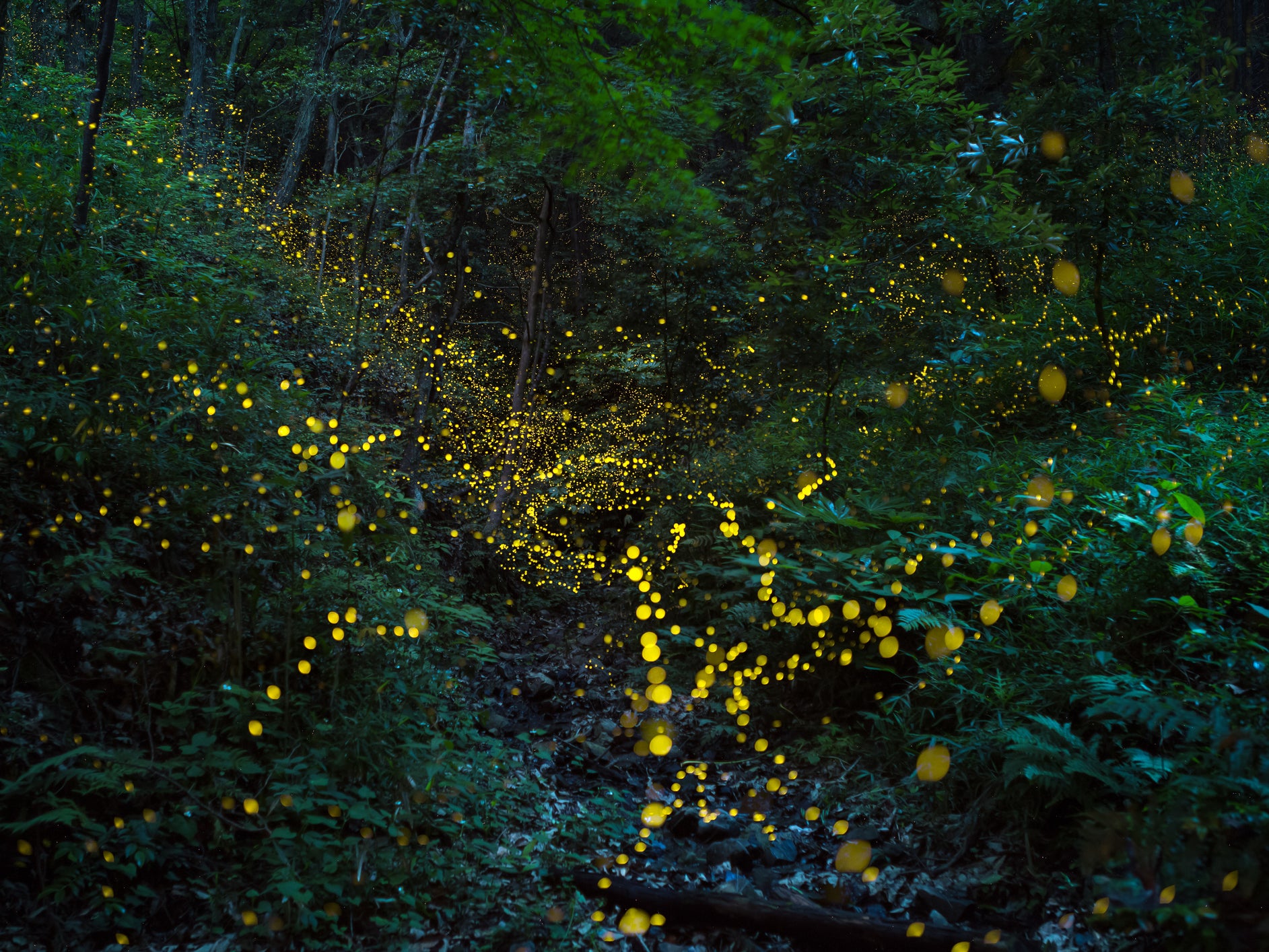Biodiversity crisis: Habitat loss, pesticides and light pollution pushing fireflies to extinction, scientists warn
‘Warning bell’ for species as vulnerable ecosystems record impact of heavy industry

Your support helps us to tell the story
From reproductive rights to climate change to Big Tech, The Independent is on the ground when the story is developing. Whether it's investigating the financials of Elon Musk's pro-Trump PAC or producing our latest documentary, 'The A Word', which shines a light on the American women fighting for reproductive rights, we know how important it is to parse out the facts from the messaging.
At such a critical moment in US history, we need reporters on the ground. Your donation allows us to keep sending journalists to speak to both sides of the story.
The Independent is trusted by Americans across the entire political spectrum. And unlike many other quality news outlets, we choose not to lock Americans out of our reporting and analysis with paywalls. We believe quality journalism should be available to everyone, paid for by those who can afford it.
Your support makes all the difference.Fireflies, of which there are more than 2,000 species strobing softly throughout dark corners of the world, are facing grave threats to their continued existence due to the impact of humans, a study suggests.
Habitat loss, pesticide use and artificial light are three of the most serious threats to fireflies, with certain species more at risk than others.
The widespread insects are soft-bodied beetles remarkable for their enchanting use of bioluminescence during twilight to attract mates or prey.
The health of firefly populations helps illustrate the impact humans have on sensitive ecosystems.
To better understand what threats are faced by fireflies, a team led by Professor Sara Lewis at Tufts University, Massachusetts, alongside the International Union for the Conservation of Nature, surveyed firefly experts around the world to assess the most prominent threats to survival for their local species.
The research, published in the journal Bioscience, “sounds a warning bell” about the insects’ future, highlighting specific threats and the vulnerability of different species across geographical regions.
According to survey respondents, habitat loss is the most critical threat to firefly survival in the majority of geographic regions, followed by light pollution and pesticide use.
“Lots of wildlife species are declining because their habitat is shrinking,” said Professor Lewis.
“So it wasn’t a huge surprise that habitat loss was considered the biggest threat. Some fireflies get hit especially hard when their habitat disappears because they need special conditions to complete their life cycle. For instance, one Malaysian firefly (Pteroptyx tener), famous for its synchronised flash displays, is a mangrove specialist.”
Drastic declines have recently been recorded in this species after the destruction of their mangrove habitat to make way for palm oil plantations and aquaculture farms.
Across the world, light pollution was regarded as the second most serious threat to fireflies.
Artificial light at night has grown exponentially during the last century.
“In addition to disrupting natural biorhythms – including our own – light pollution really messes up firefly mating rituals,” said Avalon Owens, a co-author of the research paper.
Many fireflies rely on bioluminescence to find and attract their mates, and previous work has shown too much artificial light can interfere with these courtship exchanges. Switching to energy efficient, overly bright LEDs is not helping.
“Brighter isn’t necessarily better,” Ms Owens said.
The firefly experts also said the widespread use of pesticides in agriculture was another key threat to firefly survival.
Most insecticide exposure occurs during larval stages, because juvenile fireflies spend up to two years living below ground or under water.
Insecticides such as organophosphates and neonicotinoids are designed to kill pests, yet they also have off-target effects on beneficial insects. While more research is needed, the evidence suggests many commonly used insecticides are harmful to fireflies.
The paper acknowledges previous studies which have quantified firefly population declines, such as those seen in the tourist-attracting synchronous fireflies of Malaysia, and the glowworm Lampyris noctiluca in England.
Numerous anecdotal reports suggest that many other firefly species across a wide range of habitats have also suffered recent declines.
“We really need better long-term data about firefly population trends. This is a place where citizen science efforts like Massachusetts Audubon’s Firefly Watch project can really help,” said Professor Lewis.
The researchers also highlighted risk factors that allow them to predict which species will be most vulnerable when faced with threats like habitat loss or light pollution. For instance, females of the Appalachian blue ghost firefly (Phausis reticulata) are flightless.
“So when their habitat disappears, they can’t just pick up and move somewhere else,” said co-author J Michael Reed, professor of biology at Tufts.
Despite the verdict the researchers remain optimistic about fireflies’ future.
“Here in the US, we’re fortunate to have some robust species like the Big Dipper fireflies (Photinus pyralis),” said Professor Lewis.
“Those guys can survive pretty much anywhere, and they’re beautiful, too.”
By illuminating these threats and evaluating the conservation status of firefly species around the world, researchers aim to preserve the magical lights of fireflies for future generations to enjoy.
“Our goal is to make this knowledge available for land managers, policy makers, and firefly fans everywhere,” said co-author Sonny Wong of the Malaysian Nature Society.
“We want to keep fireflies lighting up our nights for a long, long time.”
Join our commenting forum
Join thought-provoking conversations, follow other Independent readers and see their replies
Comments